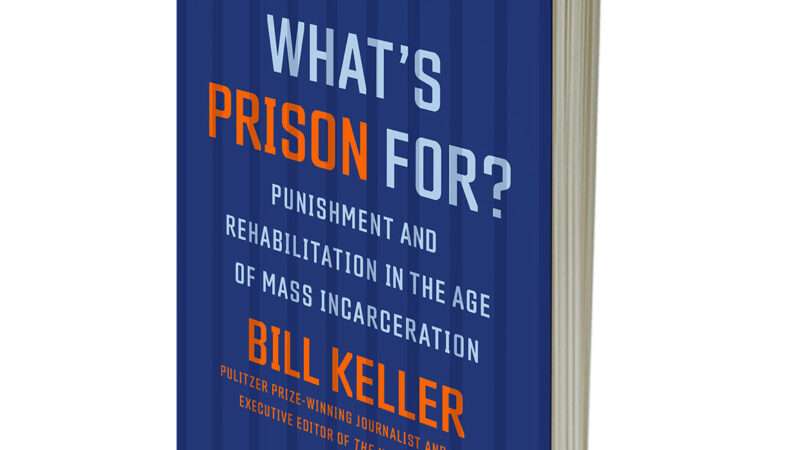Authored by Pepe Escobar,
Grab the Negronis and the Aperol Spritz; it’s show time…

It’s tempting to interpret the Italian electoral results this past Sunday as voters merrily hurling a bowl of lush papardelle with wild boar ragu over the collective bland faces of the toxic unelected Euro-oligarchy sitting in Brussels.
Well, it’s complicated.
Italy’s electoral system is all about coalitions. The center-right Meloni-Berlusconi-Salvini troika is bound to amass a substantial majority in both the Parliament’s Lower House and the Senate. Giorgia Meloni leads Fratelli d’Italia (“Brothers of Italy”). The notorious Silvio “Bunga Bunga” Berlusconi leads Forza Italia. And Matteo Salvini leads La Lega.
The established cliché across Italy’s cafes is that Giorgia becoming Prime Minister was a shoo-in: after all she’s “blonde, blue eyes, petite, sprightly and endearing”. And an expert communicator to boot. Quite the opposite of Goldman Sachs partner and former uber-ECB enforcer Mario Draghi, who looks like one of those bloodied emperors of Rome’s decadence. During his Prime Ministerial reign, he was widely derided – apart from woke/finance circles – as the leader of “Draghistan”.
On the financial front that otherworldly entity, the Goddess of the Market, the post-truth equivalent of the Delphi Oracle, bets that PM Giorgia will insist on the same old strategy: debt-funded fiscal stimulus, which will turn into a blowout in Italian debt (already huge, at 150% of GDP). All that plus a further collapse of the euro.
So the big question now is who’s going to be Italy’s new Finance Minister. Giorgia’s party has no one with the requisite competence for it. So the preferred candidate shall be “approved” by the usual suspects as a sort of enforcer of “Draghistan lite”. Draghi, by the way, already said he’s “ready to collaborate”.
Marvels of gastronomy apart, life in the EU’s third largest economy is a drag. Long-term growth prospects are like a mirage in the Sahara. Italy is extremely vulnerable when it comes to the financial markets. So a bond market a-go-go selloff in the horizon is practically a given.
In case of a – nearly inevitable – financial catfight cage match between Team Giorgia and Christine “look at my new Hermes scarf” Lagarde at the ECB, the European Central Bank will “forget” to buy Italian bonds and then, Auguri! Welcome to a new round of EU sovereign debt crisis.
On the campaign trail, sprightly Giorgia incessantly pledged to keep the massive debt under control. That was coupled with the requisite message to placate the woke crypto-“Left” and its neoliberal banking owners: we support NATO and sending weapons to Ukraine. In fact everyone – from Giorgia to Salvini – supports the weaponizing, having signed a letter during the previous legislature, in effect until the end of 2022.
Deconstructing a “semi-fascist”
The Atlanticist woke/neoliberal sphere, predictably, is fuming with the advent of “post-fascist” Italy: oh, these people always voting the wrong way… The discombobulated think tank crowd is pointing to the latest in a cycle of populist waves in Italy; they don’t even know what “populist” means. But they can’t be too hysterical because Giorgia, after all, is a product of the Aspen Institute.
Giorgia is a complex case. She is essentially a trans-Atlanticist. She abhors the EU but loves NATO. In fact, she would love to undermine Brussels from the inside, while making sure the EU does not cut off those crucial flow of funds to Rome.
So she does confound primitive, crypto-“Left” American “experts”, who blame her at best for “semi-fascism” – and thus more dangerous than Marine Le Pen or Viktor Orban. Then she gets immediate redemption because at least vocally she proclaims to be anti-Russia and anti-China.
But then again, the temptation to burn her at the stake is too great: after all she’s appreciated by Steve Bannon, who proclaimed four years ago that “you put a reasonable face on right-wing populism, you get elected.” And she keeps terrible company: Berlusconi is dismissed by the woke/neoliberal Americans as a “Putin buddy” and Salvini as a “firebrand nationalist”.
It’s imperative to imbibe a strong dose of reality to form a clear picture of Giorgia. So let’s turn to a fine Turin intellectual and author, Claudio Gallo, now benefitting from being far away from the toxic fog of Italian mainstream media, mostly a fiefdom of the dreaded Agnelli/Elkann family.
Here are Gallo’s key takeaways.
On Giorgia’s popular appeal: Her support “among working people is a fact. We can see that in every survey. However, this is not a new tendency, and it started in the time of Berlusconi. At this moment, the working class began to vote for right-wing parties. But I believe this is not an Italian-only trend. If you look at France most of the representatives of the traditional working class vote for Le Pen, not the socialist parties. It is a European trend.”
On the “Draghi agenda”: “You can figure out the kind of governments we just had as a European Troika with one man only – Mario Draghi. They have proposed the most brutal economic reforms inspired by Brussels, such as extreme flexibility and fiscal austerity. These are policies that affect mainly the middle classes and poor people (…) The Draghi government decreased welfare spending by 4 billion euros next year and another 2 billion in two years. It means 6 billion less will be available for healthcare in two years. There were cuts also in the school system. Polls show that more than 50% of Italians did not support Draghi and his program. Draghi comes from the most powerful part of society, the banking sector. In the leading Italian media, it is impossible to find any critics of this agenda.”
On a possible Berlusconi power play: “He has quite a huge audience. He is accredited with roughly 8% of the vote. After all these years and all his judicial difficulties, it is still a lot (…) A few months after the election, we can imagine a situation in which Meloni is forced to resign because she cannot cope with the harsh winter (cost of living out of control, social unrest). It will be the time of a Grosse Koalizion to save the country, and Berlusconi, with his strong stance on NATO and Europe, is ready to play his cards. Berlusconi would be the key to a new coalition. He is always ready to get any compromise done.”
On “firebrand” Salvini: “He is the leader of a very divided party. He used to have a populist agenda, but at the top of his party you can also find some technocratic figures like Giancarlo Giorgetti, a staunch defender of the interests of the North Italian Confindustria. Salvini is losing consensus within his electoral base, and Meloni stole his votes along with Movimento Cinque Stelle. His party is divided between old politicians that dreamed of some federation to strengthen the autonomy of the Northern regions and others more inspired by Marine Le Pen’s right. It’s a volatile mixture.”
On Giorgia under pressure: “The pressure of the economic issues, inflation, price of gas and so on, will make Meloni, a very tough politician but not an expert statesman, probably resign. In Italy, there is a political stalemate; like everywhere in the West, democracy doesn’t work correctly. All parties are pretty much the same, with some cosmetic differences; everyone can still make a coalition with anybody else, without any regard to principles or values.”
“The more things change…”: “The man behind the foreign policy of Fratelli d’Italia is an ex-ambassador in US and Israel, Giulio Terzi di Sant’Agata. I cannot see how his opinion differs from Draghi’s. The same neoliberal and Atlantistic background, the same technocratic resume. Meloni is simply capitalizing that she didn’t participate in the last government, even if she doesn’t offer any alternative. Meloni repeats that nothing will change; we will send money and arms [to Ukraine]. She sends a lot of signals to NATO and the EU that they can count on her when it comes to foreign policy. I think she is sincere: she is surrounded by the people who will make it real. It is very different from the situation a couple of years ago when Meloni published a book in which she said we need to have a good relationship with Putin and build a new European order. Now she has completely changed her position. She wants to be seen as a trustworthy future premier. But the polls say that 40-50% of Italians don’t like to send weapons to Ukraine, and support every diplomatic measure to end the war. The cost of living crisis will strengthen this position among the people. When you cannot warm your house, everything changes.”
The real cage match
No one ever lost money betting on the EU oligarchy always behaving like a bunch of self-entitled, stubborn, unelected pricks. They never learn anything. And they always blame everyone except themselves.
Giorgia, following her instincts, has a decent shot at burying them even deeper. She is more calculating and less impulsive than Salvini. She won’t go for a euro exit and much less an Italexit. She won’t interfere with her Finance Minister – who will have to deal with the ECB.
But she remains a “semi-fascist”, so Brussels will want her scalp – in the form of cutting off Italy’s budget appropriations. These Eurocrats would never dare doing it against Germany or France.
And that brings to the political set up of the – supremely undemocratic – European Council.
Giorgia’s party is a member of the European Conservatives and Reformists bloc, along with only two other members, the PMs of Poland and Czech Republic.
The Socialists & Democrats bloc has seven members. And so does Renew Europe (the former “liberals”): that includes the president of the European Council, the supremely mediocre Charles Michel.
The center-right European People’s Party has six members. That includes Ursula “My Grand Dad was a Nazi” von der Leyen, the sadomaso dominatrix in charge of the European Commission.
The prime catfight cage match to watch in fact is Giorgia versus dominatrix Ursula. Once again, Mediterranean swagger against the Teutonic techno-barbarians. The more Brussels harassment of Giorgia, the more she will counter-attack, with full support of her post-truth Roman legions: Italian voters. Grab the Negronis and the Aperol Spritz; it’s show time.











